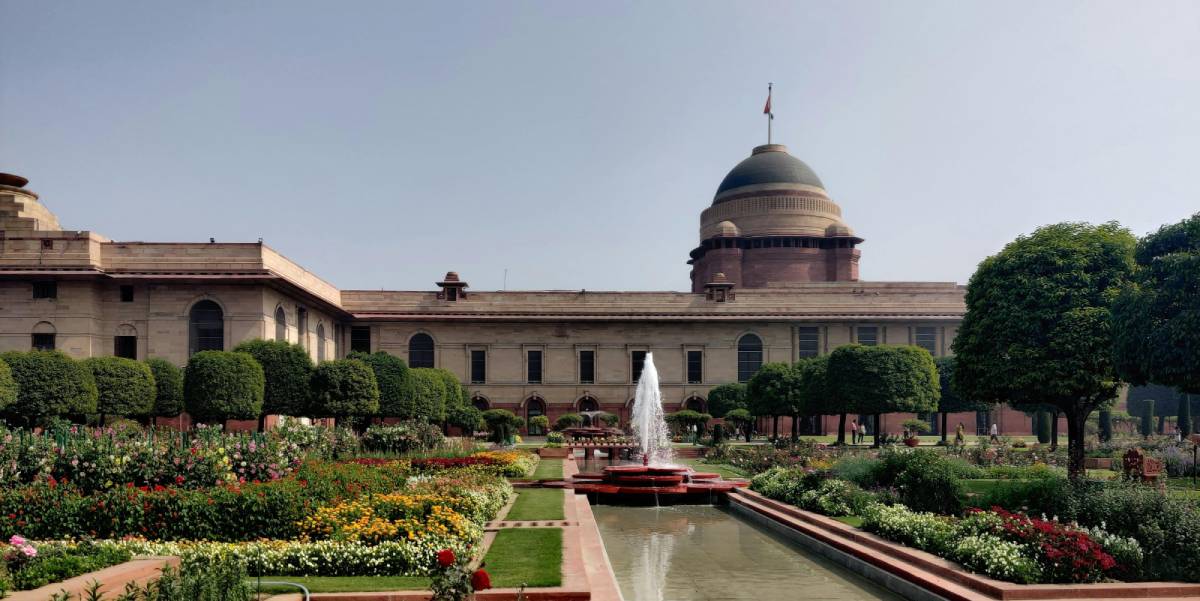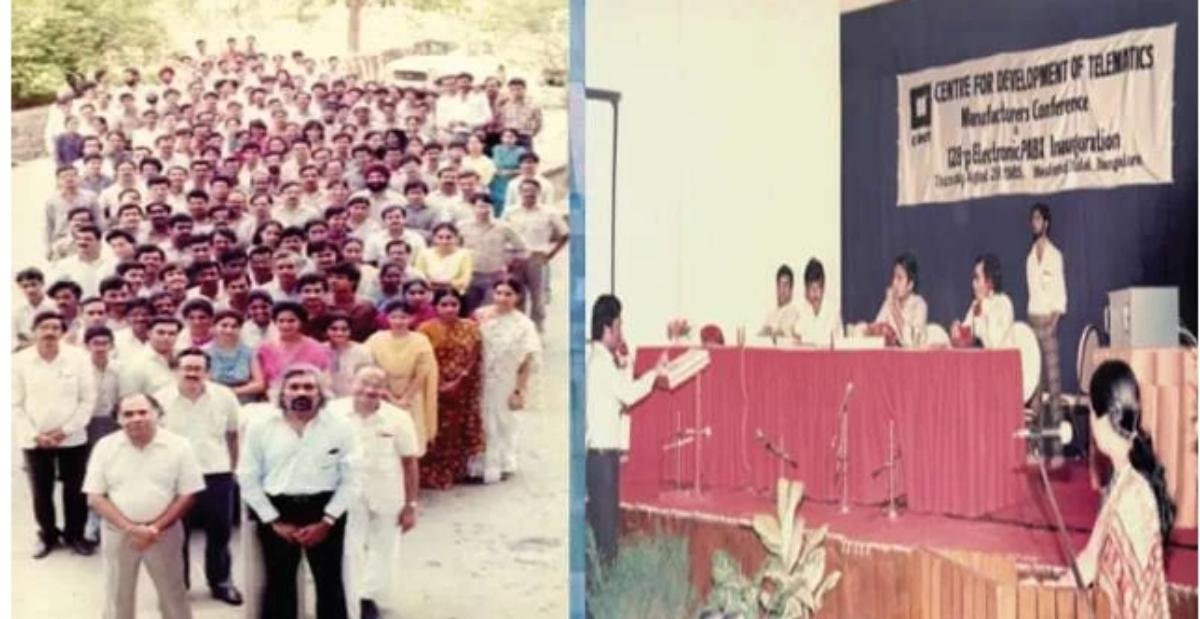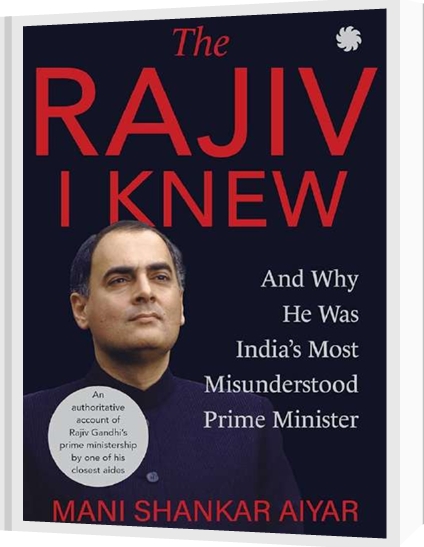Introduction – Coverage, Dimensions and Objectives of the Study
The Covid-19 pandemic and the consequent lockdowns have impacted economic wellbeing and livelihoods of the majority in a major way. As a result, the psychological health and the impact on social structure may be at risk. It was decided to carry out a study of “Prawasi and Niwasi lives and livelihoods” as follows:
Coverage of Impacted Rural Population Segments
a) Already-resident rural workers-
- Farmers: Although all category of farmers are in grave situation, among them small and marginal farmers are more badly impacted by the current crisis.
- Artisans and Non-farm workers: A large segment of rural men and women are dependent on craftsmanship.
- Women: Women and children are the other worse effected segment in our society. Women lost their jobs, the reporting of domestic violence cases are on high rise. Women are the last recipients of food and medical facilities in case of crisis. They have psychological distresses, at the same time dealing with day to day increased workloads.
b) Returnee Migrant workers –
- Both annual short-term ones and those who had been away for years
- These will further be divided into those who do not want to return to urban workplaces and those who do, when the situation permits.
Aspects / dimensions that were studied
Keeping in mind the current scenario, three dimensions were studied.
a) Health care (not just Covid precautions but overall)
b) Livelihoods (in terms of food security, employment and income)
c) Psycho-social aspects (in terms of mental health, interaction, mutuality and collaboration) 5
Objectives of the study
The study was conducted with two objectives
1 To make an assessment of various population segments in a village: residents: farmers, artisans, women and children; and returned migrant workers, from the point of view their:
1.1 The health situation, not just in terms of preventing spread of Covid infection but also in terms of regular health issues like mother and child health, immunization, earlier diseases like diarrhea, malaria and tuberculosis, and NCDs like diabetes, hypertension, cardiovascular and cancer.
1.2 The livelihood situation in terms of employment and income, mapping out what people are doing on a dynamic basis to manage, including use of own savings; sale of assets; cash receipts and in-kind help (such as food grains) from the government, charities, neighbours and relatives; getting work in MGNREGA like schemes; getting agricultural or other manual work; and any others
1.3 The psycho-social situation on the dimensions of resilience vs. helplessness, stressed vs. coping; optimism vs. pessimism about the future, and social relations in terms of saving oneself vs. mutuality and mistrust vs. collaboration
2 To develop a number of localized strategies
2.1 For health, using resources available at village level in terms of ASHAs, and rural medical practitioners, NGOs, government PHCs and CHCs and ambulance services. Some thought to be paid to how will some of the out of pocket expenses met in case of hospitalization.
2.2 For livelihoods, using resources available at village level in terms of labour, water, land, livestock, skill sets, energy sources, technology and employment options like MGNREGA, farm-work and non-farm activities
2.3 For psycho-social – prepare a number of localized strategies for promoting the mental well-being of various segments and reviving social interaction, mutuality and collaboration.
Methodology followed and Details of Respondents
The study was conducted by carrying out a survey based on telephonic interviews with a purposive sample of returnee migrants (Prawasi) and resident villagers (Niwasi) in the states of Chhattisgarh (CG), Odisha, Uttar Pradesh (UP), Bihar, Jharkhand and Rajasthan. The sample size consisted of a total of 537 respondents from the six states including 249 returnee migrant workers and 288 residents. The state wise break-up of the number of respondents is as follows:
| State | Total | Migrants | Residents |
| Chhattisgarh | 129 | 71 | 58 |
| Odisha | 121 | 59 | 62 |
| Uttar Pradesh | 105 | 50 | 55 |
| Bihar | 60 | 27 | 33 |
| Jharkhand | 60 | 30 | 30 |
| Rajasthan | 62 | 12 | 50 |
| Total | 537 | 249 | 288 |
| Gender-wise break-up (%) | |||||
| Total | Migrants | Residents | |||
| Female | 20 | 13 | 29 | ||
| Male | 80 | 88 | 71 | ||
Summary of the Major Findings of the Survey
Health
The situation on the front of health and public health administration, as indicated by the findings of the survey, is that while there are some areas where the position is relatively satisfactory with some scope for improvement, there are some areas where urgent steps need to be taken for improvement.
An indication received from the survey was that some of the systems instituted for taking health and nutrition services to the community are getting stabilised, though there is considerable room for improvement. It was reported by over 80% of the respondents that the Anganwadis were functional in their areas. 83% of the respondents also reported availability of the services of the Accredited Social Health Activists (ASHA) in their villages. It seems these are some of the functions in the area of rural health which are becoming a part of the social system. Services of immunisation etc. were also reported to be available by most of the respondents. During the pandemic, distribution of food was one of the functions entrusted to Anganwadi workers in some areas. The ASHA workers also spread awareness about COVID-19 and the precautions to be taken.
However, some of the services which needed considerable improvement in most areas were the services of Primary Health Centres (PHC). Overall, PHCs were within a distance of 5 kms. for around 62% of the respondents, though there are inter-state variations. The norms as regards establishment of PHCs are based on population served by a PHC. The Guidelines for Primary Health Centres issued under the Indian Public Health Standards by the Ministry of Health and Family Welfare in 2012 state that a typical PHC covers a population of 20,000 in hilly, tribal and difficult areas and 30,000 in plain areas. The PHC also acts as referral unit for 6 Sub-Centres. As most of the respondents in the survey could also be referring to a sub-centre while discussing the distance from a PHC, it would be difficult to estimate the extent to which the norms for establishment of PHCs have been met. However, it could certainly be said that in most states the network is established quite extensively though there is scope for improvement, especially in the tribal areas of Odisha etc.
However, though the network of PHCs was expanding in most states, mere creation of physical infrastructure did not necessarily lead to regular availability of all services at the centres. An indication of the satisfactory quality of services at the PHCs is the preference of the people to use the services of PHCs over other options in the event of a need for medical assistance. It was attempted to estimate the extent to which people prefer to approach a PHC. Though the exact estimation is difficult due to multiple preferences of the respondents, it can certainly be estimated that the services of PHCs were availed in less than 60% of the cases on an average. The percentage of preference for PHC services was especially low at 38% and 39% for the states of U.P. and Bihar respectively, though the network of PHCs/sub-centres was relatively well spread out.
The percentages of PHCs/ sub-centres within a distance of 5 kms were as high as around 80% in the states of UP and Bihar. In the context of the smaller distances from PHCs/ sub-centres reported in these states, the low preference for PHCs is a telling contrast and indicates that it is not adequate to build the infrastructure alone. An attempt was made to determine if there existed a co-relation between higher income and low preference for PHCs as it is generally assumed that people with relatively higher income would tend to prefer medical services from centres other than PHCs. However, the available data does not support this hypothesis, though some further analysis may be required to be carried out.
It appears that on many occasions the staff posted at the PHCs were not available at the centres in almost all states. The irregular attendance of staff, the inconsistent supply of required medicines etc. and the perceived quality of care have resulted in people mostly preferring consulting an unregistered medical practitioner or even a medical stores operator instead of approaching a PHC. PHCs serve as a “first port of call” for medical needs in the public health sector. It could reasonably be argued that patients opting for PHCs for medical needs on maximum occasions is the primary test of the success of public health services. It could sadly be said that, on this count, the public health services have failed.
Another concern voiced by the respondents was that during the pandemic the attention of the medical and health personnel was diverted toward the containment of the virus and precautionary measures due to which some of the other health issues received lesser attention.
Livelihoods and Income
An important objective was to study the situation as regards livelihoods, both of the residents in the villages and of the migrants who had returned to the villages. As regards migrant returnees, it was attempted to assess the details of the nature of work done by the migrants in their work locations; the reasons for their migration; the income differential, if any, on migration; willingness to go back to the earlier location for work; the possible livelihood options and the opportunities available to them in their villages as also the type of work they could do and were willing to do. Similarly, the details of residents were attempted to be studied in respect of income earned and the sources of income with relative share of each of the sources; details of land and irrigation facilities etc. It was attempted to ascertain as to what was expected from the government by both the residents and migrants and what could be done to better their lot.
The various aspects tried to be assessed and the findings are as follows:
a) Types of jobs done by migrants:
Migrant returnees were asked about the type of work they used to do at their work locations. The responses were classified into five categories and the percentages of workers in each of the categories of work were as follows:
| Skilled work | 28.17 | 37.30 | 18.00 | 33.33 | 60.00 | 66.67 | 34.50 |
| Construction work/ wage labour | 50.70 | 57.60 | 58.00 | 52.78 | 16.67 | 16.67 | 48.45 |
| Factory work | 11.27 | 5.10 | 18.00 | 8.33 | 23.33 | 16.67 | 12.40 |
| Own enterprise | 9.86 | 9.86 | 0.00 | 2.78 | 0.00 | 0.00 | 3.10 |
| Domestic work | 0.00 | 0.00 | 6.00 | 2.78 | 0.00 | 0.00 | 1.55 |
| Total | 100.00 | 100.00 | 100.00 | 100.00 | 100.00 | 100.00 | 100.00 |
It was observed that almost half (48.5%) of the migrant workers were engaged in work on daily wages including as construction workers. A welcome finding is that over one-third of the migrants were engaged in skill-based occupations such as that of plumber, electrician, carpenter etc. Only three percent of the workers reported that they ran their own enterprises.
If a higher share of skilled workers amongst all migrant workers is to be taken as rough indicator of higher level of skill and quality of working population, it was encouraging to observe that most workers from Jharkhand were engaged in skilled work (60%) and another 23% worked in factories. Only one-sixth of the migrant workers from Jharkhand were engaged in wage labour as per the data. Rajasthan too had a large share of skilled workers, with two-thirds of the workers being engaged in skilled work which was the largest share amongst all states. (However, as will be seen later, this has not translated into higher earnings for the migrants of Rajasthan). Over half of the workers were engaged in wage labour or construction work Chhattisgarh as well as Bihar and in U.P. the percentage was as high as 58%.
It would be insightful to study the factors which contribute to making the migrant work-force from a state or region take up more of skilled activities.
b) Reasons for Migration:
The reasons for migrations were also sought to be understood. As would be expected, the most common reasons stated by the migrants included i) non-availability of adequate work in the village ii) landlessness and iii) possibility of earning higher income on migration. An attempt was also made to study the differential between incomes of residents and migrants.
c) Borrowings during the pandemic:
A question was asked as to how the respondents normally coped with any requirements of additional funds for any reasons. Almost half the respondents stated that they usually take loans or receive support from relatives, neighbours and friends. It was also asked if they had to borrow during the pandemic. It was found that only 17.5% of the respondents needed to borrow any money during the pandemic (the interviews were conducted in the second half of May and early June). It was a good sign to see that the number of people borrowing was not high and is perhaps an indication that the traditional social security networks of support from relatives and neighbours etc. in rural India continue to be active.
d) Average Income levels of migrants and residents:
The data related to incomes of respondents in any survey has to be carefully studied before drawing any major conclusions from the data based on the responses. This is because of the reluctance of many respondents to part with exact information regarding their incomes but also because many farmers and workers with irregular income patterns do not have accurate records of their incomes. Keeping this caveat in mind, the income pattern of migrants and residents was analysed. The average annual incomes of residents as well as migrants as disclosed are presented in the table below:
| Average incomes per annum (in Rs.) of migrants and residents | |||||||
| Residents | Migrants | Combined | Increment for migrants % | ||||
| Chhattisgarh | 116100 | 75070 | 93692 | -35.34 | |||
| Odisha | 66840 | 122000 | 91960 | 82.53 | |||
| UP | 78550 | 109100 | 93100 | 38.89 | |||
| Bihar | 72880 | 88700 | 80000 | 21.71 | |||
| Jharkhand | 57330 | 92170 | 74750 | 60.77 | |||
| Rajasthan | 112500 | 78750 | 105970 | -30.00 | |||
| Average | 86800 | 95900 | 87130 | 10.48 | |||
The average annual income of the respondents in the survey stands at only Rs. 87,130. Rajasthan has the highest average annual income amongst all states at around Rs. 1,06,000/-. The average income of Niwasi (resident) farmers from all the states was Rs. 86,800. The average was highest for CG followed by Rajasthan. As regards migrant workers, the average income was higher than the Niwasi farmers at Rs. 95,900. Odisha had the highest figure of average income of migrants amongst all states followed by U.P.
As per the NABARD All India Rural Financial Inclusion Survey (NAFIS) average agriculture household income was Rs 8,931 per month in 2016-17 which is equivalent to around Rs. 1,07,000 p.a. According to the report of the Committee on Doubling of Farmers’ income, the average annual earnings of a small and marginal farmer household in 2015-16, stood at a figure of Rs. 79,779/-. (https://www.livemint.com/budget/expectations/india-needs-a-new-deal-for-rural-india-1562254473284.html). With only a marginal increase to be expected in the income of the farmers over the last four years, the income as derived from the survey does not appear to be wide off the estimate of the Committee. However, the average income of farmers as per the survey is lower than the NAFIS estimates. It may also be mentioned here that in some cases the farm produce retained for home consumption has not been included in the total income in our survey, which too would have resulted in understating the income to some extent.
An analysis of the average annual income of migrants as compared to that of residents indicates that the income of migrants was higher than that of residents by 10.5 per cent. However, this average of all states hides large variations in the pattern within the states. In Odisha, the incremental income of migrants over that of the residents is the highest in percentage terms at 82.5%, while in CG and Rajasthan, the migrants actually earned less than the residents surveyed in those states. Prima facie, it appears that the land holdings of the residents covered in the survey in these two states were slightly higher than the average. In Rajasthan, nearly 40% of the respondents had land holdings of over 3 acres. The level of income of migrants would also depend on the type of work – wage labour or skilled and semi-skilled work – undertaken as also the destination state. To understand the situation better, a comparison was made by excluding the two states of CG and Rajasthan. The resultant figures are presented as follows:
| Income differential -Migrants over residents excluding CG and Rajasthan | |||
| State | Avg. Income p.a. – Residents Rs. | Avg. Income p.a. – Migrants Rs. | Income differential % |
| Odisha | 66840 | 122000 | 82.54 |
| UP | 78550 | 109100 | 38.9 |
| Bihar | 72880 | 88700 | 21.71 |
| Jharkhand | 57330 | 92170 | 60.76 |
| Average | 69955 | 106563 | 52.33 |
With the exclusion of the two outlier states of CG and Rajasthan, the average income of migrants in comparison to that of the residents indicates a comfortable increment of over 52%. The high income of migrant workers from Odisha could be due to the fact that out of those surveyed, 29% used to work in Kerala where the wage rate is reported to be comparatively higher. Another 13% go to Maharashtra and 10% to Gujarat which are also considered to be relatively higher paying states, especially for those working in diamond, textiles and gold jewellery sectors. (these statements admittedly are not based on hard data from the survey).
However, it has to be mentioned that this analysis only compares the average incomes of migrants with those of residents and does not necessarily indicate the incremental income which a migrant would earn on migration over the income he or she could have earned in the place of residence.
e) Willingness to go back to work-location:
Half of the migrant workers covered in the study (126 out of 248 – 50.8%) expressed willingness to go back to their workplaces. It may also be noted that the survey was conducted in the month of May and it is surmised that the number of those who would be willing to go back would have increased in the subsequent period, partly because they would have got over their initial reaction to their plight due to the developments that unfolded and also because they would have realised that the situation in their villages – which made them migrate in the first place – continued to be more or less the same as earlier. In Odisha, the percentage of those who were willing to return was as high as 65% followed by Jharkhand where over 61% of the workers were willing to return. In U.P., the percentage was 48% and CG had the lowest percentage of those willing to return at 32%. It needs to be examined if the skilled workers are more willing than the rest to go back.
Possible Livelihoods Options
The migrant workers were asked as to what according to them were possible livelihoods options for them back in their villages. While more than one option was indicated by many as was to be expected, wage labour was an option chosen by as many as almost 60% of the respondents. The next choice was farming which was chosen by 30% of the respondents. Skill-based work was mentioned by approximately 22%, while 21% mentioned running some business enterprise as an option. Livestock (dairy and poultry) was mentioned by around 10% of the respondents. A point worth mentioning is that as many as 47.5% of the migrants from Odisha mentioned business enterprise as one of the options. In Gajapati district alone, as many as 19 migrants conveyed a desire to start business enterprises of their own. The state-wise position of various options mentioned is given in the following table:
| Percentage of migrants choosing possible livelihoods options | ||||||
| CG | Orissa | UP | Bihar | Jharkhand | Rajasthan | Total |
| Farming | 0.00 | 57.63 | 16.00 | 59.26 | 46.67 | 30.38 |
| Dairy | 0.00 | 5.08 | 4.00 | 22.22 | 20.00 | 7.17 |
| Labour | 61.97 | 50.85 | 74.00 | 33.33 | 70.00 | 59.49 |
| Poultry | 0.00 | 0.00 | 0.00 | 3.70 | 20.00 | 2.95 |
| NTFP | 0.00 | 5.08 | 0.00 | 0.00 | 0.00 | 1.27 |
| Skilled work | 28.17 | 13.56 | 24.00 | 25.93 | 16.67 | 21.94 |
| Business/ enterprise | 9.86 | 47.46 | 10.00 | 29.63 | 6.67 | 21.10 |
| Any other | 1.41 | 5.08 | 8.00 | 11.11 | 3.33 | 5.06 |
It needs to be ascertained if the skill-based work, listed by the migrant workers as one of the options, has scope within the village and the surrounding area. It is a welcome sign that as many as 31% mentioned some enterprise – either by way of business enterprise or dairy or poultry. As regards the percentage of migrant workers interested in business enterprise, Bihar comes after Odisha (47.5%) with almost thirty percent opting for some business. Bihar also tops in the choice for dairy at 22%. Jharkhand shows a marked preference for dairy and poultry (20% for each), thus topping the choice for livestock-based occupations.
Expectations from the Government and suggestions of the respondents
Respondents were asked to share their expectations from the government or local organisations including non-profit organisations and also their suggestions for improvements in their situation. It needs to be noted that the suggestions were solicited in a period immediately after the loss of livelihoods of the migrants and their return to their villages. Some of the suggestions, therefore, appear to have been influenced by the immediacy of the impact of the pandemic and the lockdown when concerns about food and meeting of expenses were foremost in their minds. In spite of this, monetary assistance till the situation becomes normal was also expected only by a relatively smaller section. The two demands voiced by maximum number of respondents were related to greater availability of wage-based work and the expectation for loans.
a) Availability of work within the villages:
Expectation was voiced for availability of higher number of jobs or more wage-based work, including under MGNREGA, to be provided in the villages by almost 44% of the respondents. There were also expectations for higher rate of wages.
b) Demand for loans:
The other expectation which was voiced by many respondents was for loans, either crop loans or loans for irrigation, purchase of livestock etc. or for starting some business. The demand for loans was also marked by expectations from some about low or nil interest rate, easy terms of repayment etc. One of the reasons for high number of respondents expecting loans must have been the time at which the interviews were conducted i.e. just before the sowing seasons when the farming community is in need for loans for agricultural operations. It may be added that around 70% of the requirements were for loans below or up to Rs. 50,000/-.
c) Training for skills and assistance for starting business enterprise:
An encouraging feature was that there were some respondents expecting training for skills development (including one suggestion for training in use of new technologies such as internet, smartphones etc.). Similarly, some were desirous of financial assistance in starting new business. Though the number of persons with such expectations was limited, it indicated 12
a desire at least on the part of some of the people to acquire some new skills and / or set up some business of their own. As an example, in Odisha alone, 24% of the respondents showed an inclination to start an enterprise such as kirana shops; tea stall and restaurants; shops for selling of garments, shoes, spare parts etc. besides vegetable vending and cycle marts. Some were also desirous of starting provision of services such as welding, carpentry, tailoring etc.
d) Expectations about infrastructure, policy reforms etc.:
There were also a few suggestions voiced for better amenities and for infrastructure as well as for reforms in systems. These related to provision of irrigation facilities, storage, measures for land reclamation (banjar bhumi sudhar) etc. Some of the demands expressed were for establishment of market linkages for their produce including horticultural produce. Besides demands for better prices for agricultural produce etc., there were also a few respondents seeking measures for elimination of middlemen. There were suggestions about starting small processing units for produce such as maize etc. or dairy processing units in villages. Setting up of factories in their regions was also a demand including a demand for reviving a closed spinning mill in Uttar Pradesh.
Learnings and pointers to action from the survey
The returning of the migrant workers to their villages in the wake of the pandemic has given rise to many challenges which can be considered as unprecedented. At the same time, the situation has also awakened us to a wide range of new possibilities and has provided the scope to think of various new options.
While the various policy measures and long-term solutions which could be attempted would be discussed in the subsequent sections, a few points which emerged out of the discussions with the various respondents are presented below.
a) First of all, the public health services need to be activated to ensure that they are oriented toward provision of quality healthcare to the people. While certain aspects of community health system such as anganwadi and services of ASHA workers are making their presence felt in most of the areas, the provision of medical assistance through Primary Health Centres needs to be made more people-centric. A system of accountability to the people needs to be devised. While the neglect of this important need of the community is evident from a survey of six states, it could be assumed that the services could be more or less similar throughout the country, though the situation in certain well-governed states and states with better public awareness could be better. There should be no need for a person in need of medical aid to approach an unqualified and unauthorised private practitioner in spite of the presence of a public health within a reasonable distance. Civil Society organisations, not just those working in the area of health but also other organisations, should work for enabling the community to demand the delivery of services from official agencies.
b) The widespread demand voiced by the respondents for loans, for agriculture and to a lesser extent for starting a small business, is indicative of the failure of the mechanism for making formal finance available to all sections of the society and points out the lacunae in the apparatus for financial inclusion in the country. If one of the objectives of policy in the post-pandemic era would be to reduce the extent of migration to distant destinations in search of work, provision of finance for running an enterprise or to carry out agricultural operations would be an essential instrument to achieve the objective. It is high time the regulatory authorities and the government, organisations of businessmen and agriculturists, civil society organisations and persons from the media as well as academia come together to discuss the issue and find out solutions to an issue which has not been resolved in spite of decades of various initiatives and policy measures.
c) One of the findings worth noting is that while provision of wage-based work including through schemes such as MGNREGA was demanded by many and that various projects would have to be rolled out urgently under this and other similar schemes, not all returned migrants would be able to perform work involving manual labour. Migrants who have worked in cities performing skilled tasks as also those who have done work such as courier delivery or as shop attendants etc. would not necessarily be able to engage in physical labour. Therefore, while planning for provision of work to returned migrants, various other means of providing work would have to be thought of taking into account the diverse capabilities of the migrants. At the same time, the implementation of schemes such as MGNREGA needs to be made more transparent and care has to be taken not to exclude those desirous of participating in the same.
d) Revival of sustainable agriculture through various productivity enhancing measures would help obviate the need to migrate for livelihoods. Quite a few agriculturists have demanded provision of irrigation facilities. Water harvesting measures could be initiated immediately. If rabi crops could be harvested in some of the places with some water conservation measures, the need to migrate seasonally for work could be reduced. Some farmers have also demanded arrangements for storage, assistance in market linkages etc. Along with these measures, it is important that environmental degradation is prevented so that agriculture and allied activities become sustainable.
e) Setting up of processing units for dairy and agricultural produce was also a demand from some of the respondents. While such initiatives are imperative to ensure development of the region and to provide and improve livelihoods, these may take some time to be set in motion.
f) If it is desired that the returned migrants do not have to go back and should find satisfactory opportunities for livelihoods in their own regions, one of the effective measures would be to provide support for starting their own business enterprise to the migrants as well as to the residents. The nature of support could include providing training in technical aspects of various businesses, exposure to entrepreneurial skills and hand holding in running the enterprise at least in the initial period. Imparting knowledge about the various sources of securing the finance required and the requirements for availing of the finance would also have to be arranged for. Setting up micro-enterprises and community enterprises would not need elaborate preparations in most cases and could be expected to commence operations in a relatively short period of time. It should also be recognised that a migrant would have acquired a better exposure to the outside world and would have picked up certain entrepreneurial skills due his interactions with the world of commerce during the performance of his duties. These qualities acquired by a migrant worker would have to be capitalised upon to spur him or her to start a new enterprise.
g) Training in skills related to various trades such as plumbing, masonry, tailoring, automobile repairs etc. would go a long way in enhancing livelihood opportunities and improving the income levels of the people. It is possible that the demand for certain skills would be limited in the near future within the areas of residence of the returned migrants. However, since some of the returned workers would certainly be going back to the cities where they worked, it would help if they go back as skilled workers since their services would be in greater demand at the destination centres. It is also presumed that they would be able to earn a higher income, though this aspect needs to be studied and verified.
h) The question of low aspirations and limited expectations appears to be the perhaps most serious issue brought out by the discussions during the survey and the responses to some of the questions. In response to the questions on expectations from the government, civil society organisations etc. most respondents have talked of governments providing additional work on wages or loans on easy terms. No doubt a few respondents have spoken of provision of irrigation, storage facilities, setting up of processing units etc. and of policy measures for better linkage to markets etc. Some have also demanded support for setting up their enterprises. However, such suggestions are limited and come from a few respondents. It is a telling observation that no respondent spoke of better facilities for education for their children.
i) The overall approach of being passive receivers of assistance from the government agencies as displayed by the responses discussed in the aforementioned point, is indicative of certain challenges for civil society organisations. Does this approach mean that civil society organisations have not been able to kindle the aspirations of people and to make them dream of a much better world? Have civil society organisations even tried to encourage such aspirations or have they been content with providing welfare measures and ensuring that various benefits reach the masses from the government? As a society, we should try to reduce the dependence on government and try to be more active in the role as makers of our own destiny.
A shortcoming of the survey based on telephonic interviews was that discussions could not be held in groups. If that was possible, a question could have been asked as to what they could think of doing collectively for a better standard of living. The value of efforts to ensure that government schemes reach the intended beneficiaries is not being undermined and even these efforts could contribute significantly to the betterment of the lot of the people. However, even in this aspect the people do not seem to be assertive enough to demand accountability from the government agencies for proper delivery of services.
Long Term Measures
The actionable points mentioned above are more or less measures which should be initiated with immediate effect. However, the issues involved are complex and would not be addressed only by short term measures. The situation needs structural changes and long- term measures.
To initiate further action in some of these areas, Rajiv Gandhi Institute for Contemporary Studies (RGICS) have taken up a study of Common Property Resources (CPRs) to develop an inventory and understand the status of these resources and factors behind degradation of the CPRs. The study can be expected to find out ways of preserving these age-old resources which have not only served the community over the years but have also sustained the environment.
As promotion of entrepreneurship could help reduce the need for migration and provide livelihoods to people in their neighbourhood, RGICS have also initiated a project Rajiv Aajivika Samvardhan Abhiyan (RASA) under the Livelihood Revival Support Programme in partnership with various local organisations wherein aspiring entrepreneurs would be supported in setting up micro-enterprises in 25 districts in seven states. The support would include hand-holding besides imparting the requisite initial training. Identification of the potential entrepreneurs to be trained has already been done in some states and is well on the way in others.
These initiatives are only some of the actions initiated by RGICS after the conduct of this and other surveys. These actions would ensure that the surveys do not remain only as passive studies but serve as fuel for constructive action on the ground.








